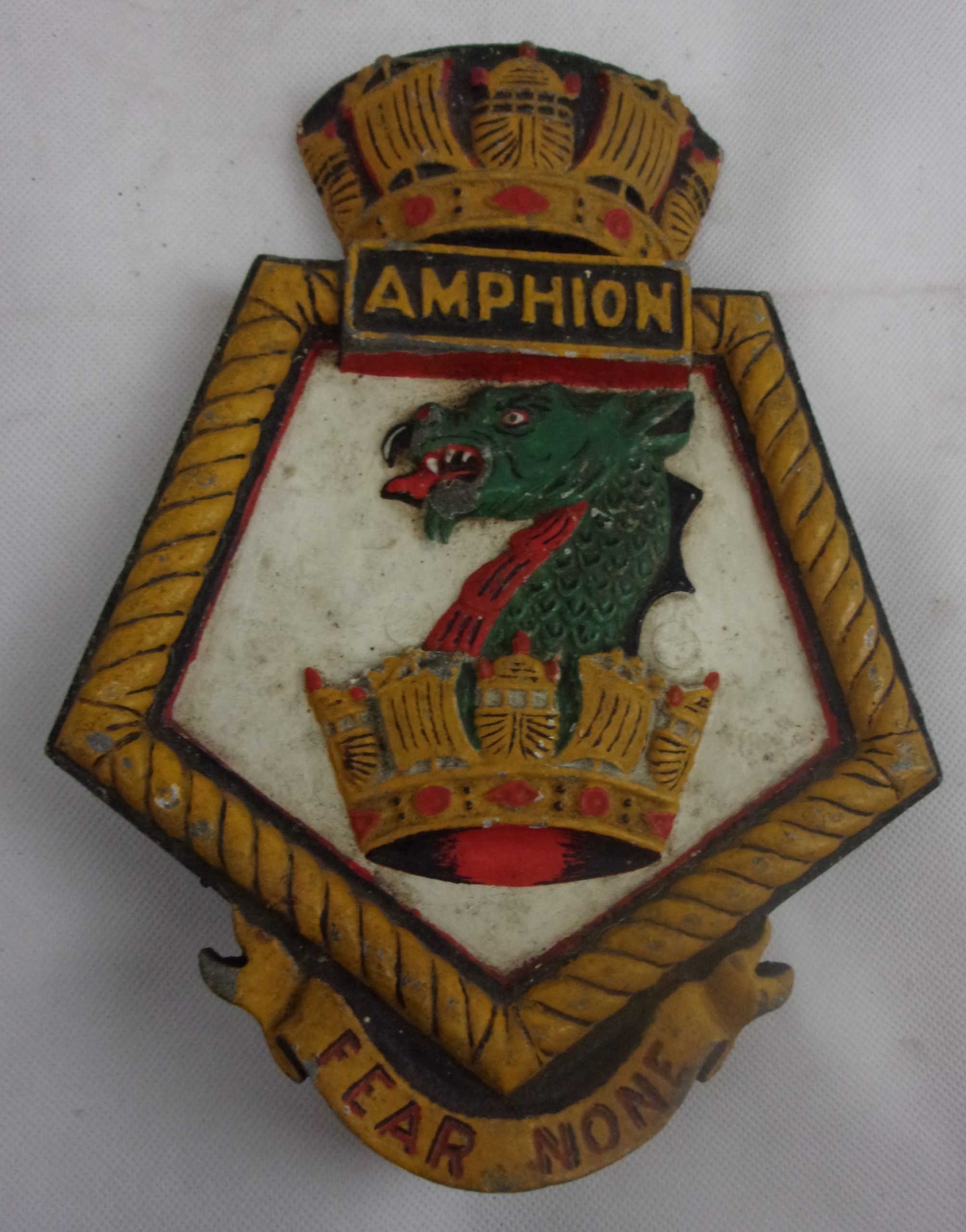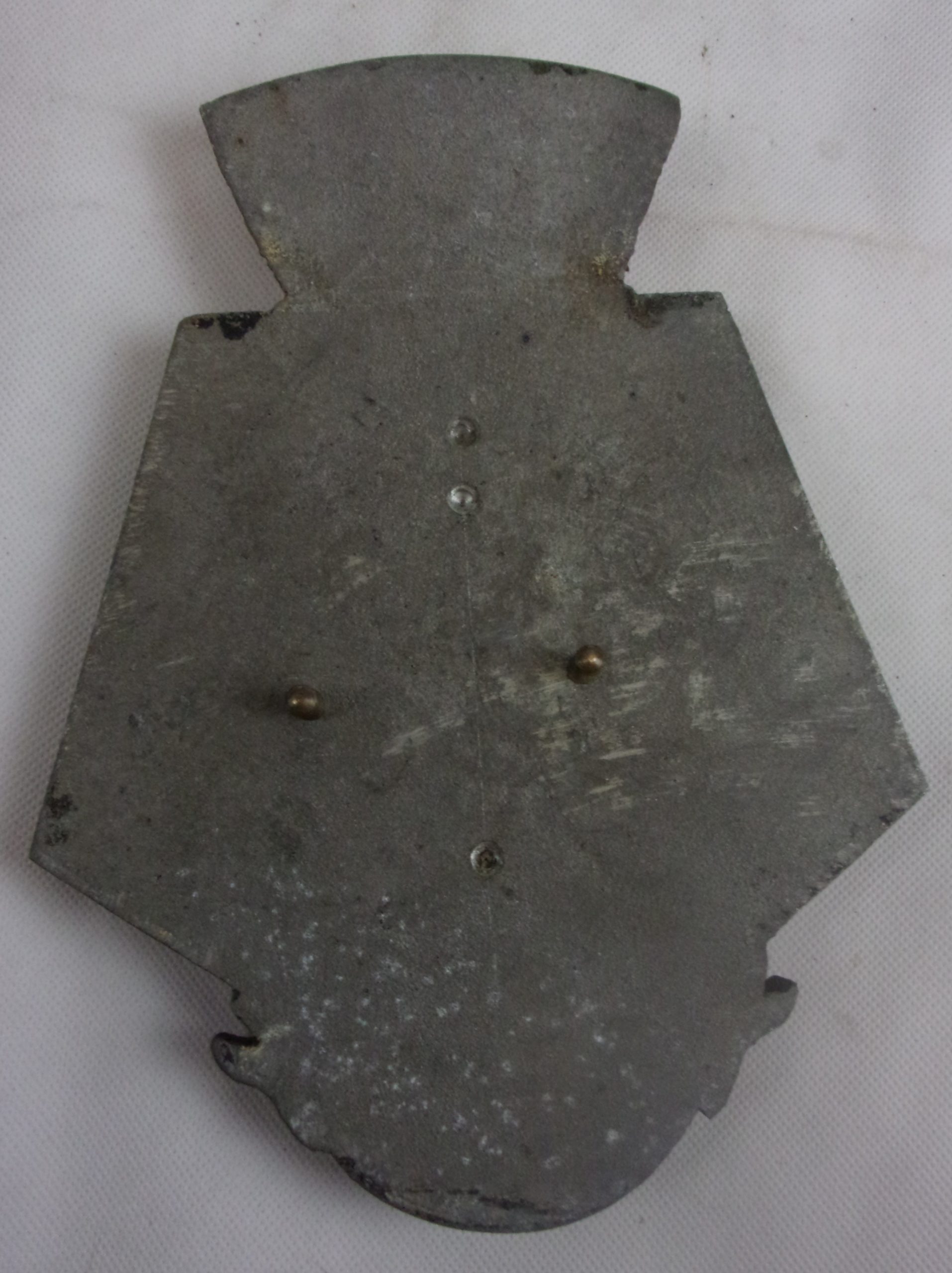~ HMS Amphion Later HMAS Perth Steel 1936 Light Cruiser Boat Badge ~
The badge is an original piece from the ship and would have been disposed of when it was renamed after being transferred to the Royal Navy. There are two screws to the reverse as well as three further holes from prior fixing.
It bears the ship’s name and emblem of a sea dragon’s head.
~ HMS Amphion / HMAS Perth ~
HMAS Perth was one of three modified Leander-class light cruisers used by the Royal Australian Navy (RAN) during the early part of World War II. She was built for the Royal Navy (RN) in the mid-1930s and was commissioned as HMS Amphion in 1936. The ship spent the next several years as flagship of the Commander-in-Chief, Africa before she was transferred to the RAN in 1939 and renamed as HMAS Perth.
At the start of World War II in September, the ship patrolled the Western Atlantic and the Caribbean in search of German shipping and escorting convoys for six months before she was ordered home in early 1940. The ship continued the same types of duties in Australian waters before she was transferred to the Mediterranean Fleet at the end of 1940. Perth then helped to escort numerous convoys to Malta in early 1941 and played a minor role in the Battle of Cape Matapan in March. She escorted convoys to Greece and Crete and helped to evacuate Allied troops from both places in the face of the victorious Axis forces. The ship was badly damaged by Axis aircraft in May during the evacuation of Crete.
After repairs were completed in June, Perth provided naval gunfire support to Allied forces ashore during the Syria-Lebanon Campaign and bombarded Vichy French targets. She returned to Australia in mid-1941 and was tasked with the same sorts of missions as she had been performing at the beginning of the war. The ship continued to perform these tasks after the start of the Pacific War in December until she was transferred to the American-British-Dutch-Australian Command in February 1942 to help defend the Dutch East Indies against the Japanese. Perth was not damaged during the Battle of the Java Sea, but was torpedoed and sunk by the Imperial Japanese Navy at the Battle of Sunda Strait immediately afterwards.
Over half her crew was killed in the battle and only about two-thirds of the survivors survived captivity to return home after the war. The ship’s wreck was discovered in 1967 and was essentially intact; by 2013 the wreck had been partially stripped by Indonesian marine salvagers and was in even worse condition four years later.
~ Condition ~
The badge is in good order. There is light corrosion and wear to the painted finish from service at sea.
~ Dimensions ~
The boat badge is 25 cm (9.75 inches) tall by 17.5 cm (7 inches) wide.
#9785





